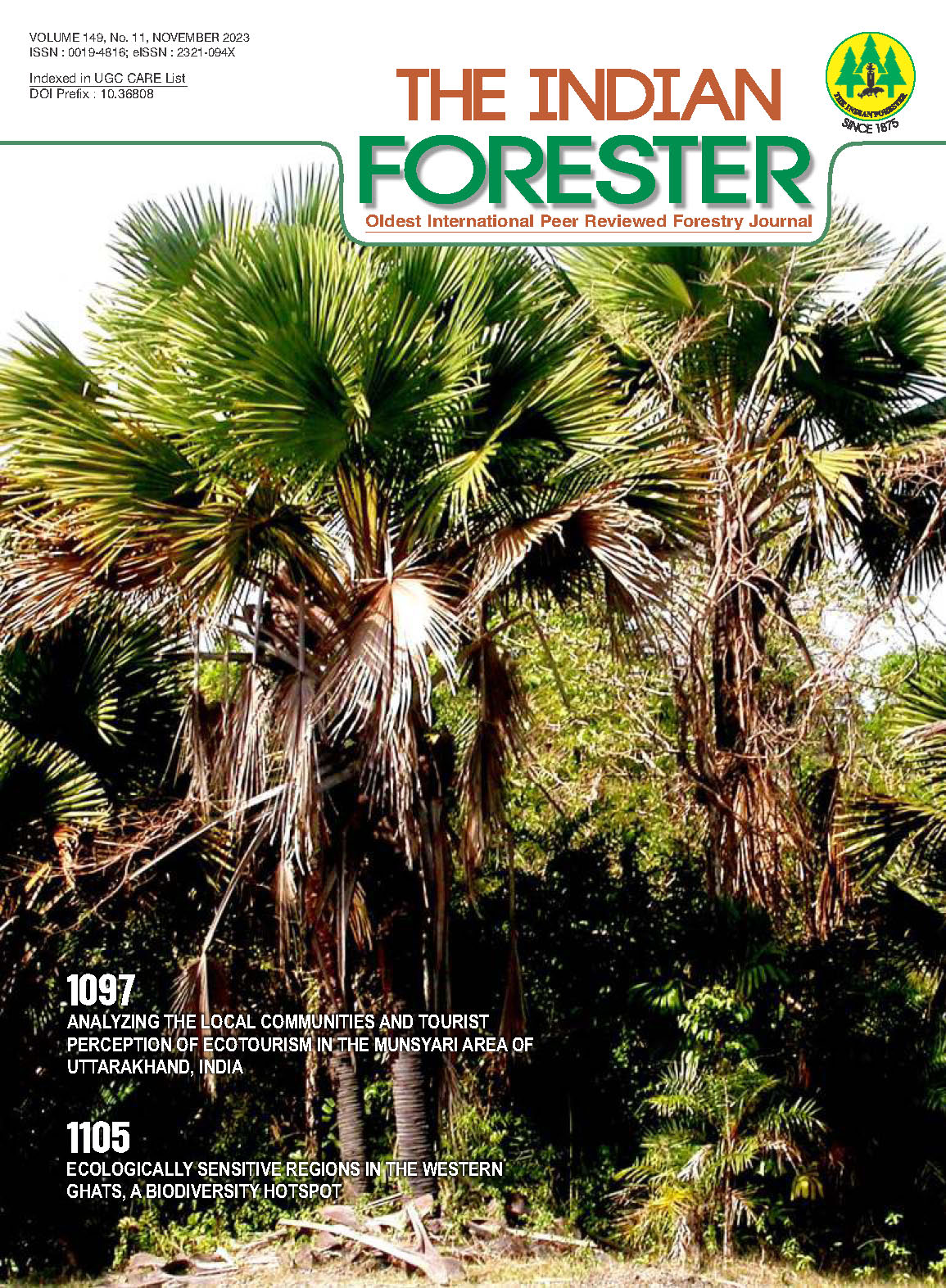An Insight to the Plants of Sacred Groves Used for Toxicological Treatment in Ayurveda
DOI:
https://doi.org/10.36808/if/2023/v149i11/169602Keywords:
Sacred Groves, Vaidya, Lepa, Nasya, Anjana.Abstract
Sacred groves are the miniature of forest derived on the basis of cultural faith. These virgin areas have been protected since ages by traditional societies and indigenous communities with their own experiences and followed a system of cultural worship. Such ecosystem approaches have worked under certain rules and myths goes to be at the origin of temple. And those sacred places have great vegetation without any significant disturbance and thereby exhibit unidentified relatives of cultivated plant species and threatened species have great medicinal value.References
Ittoop Jacob Ancheril, Sharanesh T. and Deepthi V. (2016). Snake bite treatment in Prayoga Samuccayam. AncSci life.2016 Apr-Ju; 35(4): 245-248.
Kannan Chandra Sekhara Warrier (2004). Sacred Groves Conserved by an Ancestral Home in South Kerala- A Case Study. Conference: National workshop on strategy for conservation of Sacred Groves, at Coimbatore, India May 2004.
Kochunni Thampuran (1970). Prayoga Samuchayam Editor 1999 ISBN: SB22 1299-2000. Binding paper Back Thrissur Sulabha Books.
Leena Abraham (2013). From vaidyam to Kerala ayurveda The News letter No.65 Autmn 2013.
Peter Hobbins (2017). History: how the science of snake bite treatments has changed. University of Sydney Published February 6 2016.
Downloads
Downloads
Additional Files
- Requires Subscription AN INSIGHT TO THE PLANTS OF SACRED GROVES USED IN TOXICOLOGICAL TREATMENT IN AYURVEDA
- Requires Subscription Plagiarism certificate
- Requires Subscription Plagiarism certificate2
- Requires Subscription AN INSIGHT TO THE PLANTS OF SACRED GROVES USED FOR TOXICOLOGICAL TREATMENT IN AYURVEDA
- Requires Subscription AN INSIGHT TO THE PLANTS OF SACRED GROVES USED FOR TOXICOLOGICAL TREATMENT IN AYURVEDA
Published
How to Cite
Issue
Section
License
Unless otherwise stated, copyright or similar rights in all materials presented on the site, including graphical images, are owned by Indian Forester.





